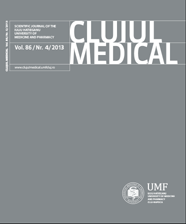A Rare Variation Of The Digastric Muscle
Keywords:
neck muscles, variations, digastric muscle, hyoid bone.Abstract
The digastric muscle is composed by two muscle bellies: an anterior and a posterior, joined by an intermediate tendon. This muscle is situated in the anterior region of the neck. The region between the hyoid bone and the mandible is divided by an anterior belly into two triangles: the submandibular situated laterally and the submental triangle which is located medially. We found that the anatomical variations described in the literature relate mainly to the anterior belly and consist of differences in shape and attachment of the muscle. During routine dissection in February 2013 in the section hall of the Department of Anatomy and Histology in Medical University – Sofia we came across a very interesting variation of the digastric muscle. The digastric muscles that presented anatomical variations were photographed using a Sony Cybershot DSC-T1 camera, with a Carl Zeiss Vario-Tessar lens. We found out bilateral variation of the digastric muscle in one cadaver. The anterior bellies were very thin and insert to the hyoid bone. Two anterior bellies connect each other and thus they formed a loop. The anatomical variations observed of our study related only to the anterior belly, as previously described by other authors. It is very important to consider the occurrence of the above mentioned variations in the digastric muscle when surgical procedures are performed on the anterior region of the neck.
Downloads
Published
How to Cite
Issue
Section
License
The authors are required to transfer the copyright of the published paper to the journal. This is done by agreeing to sign the Copyright Assignment Form. Whenever the case, authors are also required to send permissions to reproduce material (such as illustrations) from the copyright holder.

The papers published in the journal are licensed under a Creative Commons Attribution-NonCommercial-NoDerivatives 4.0 International License.

